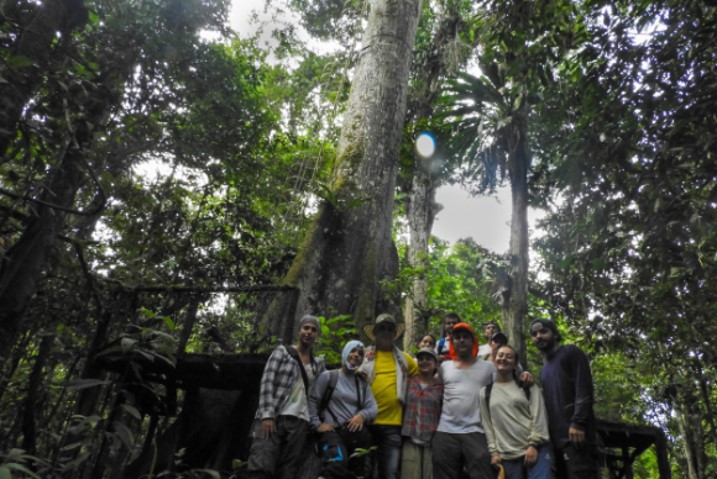Álvaro Duque joined the ForestGEO network when he led the establishment of the Amacayacu, Colombia plot in 2007. In this latest installment of our Spotlight Series, Álvaro speaks about his academic origins in the study of economics, capacity building opportunities at Amacayacu, and his hobbies when he’s not in the field.
When did you realize that you wanted to be a forest ecologist?
I was studying economics when I realized that I wanted to work in forest ecology. I wanted to get into a program for civil engineering when I finished secondary school, but instead I was accepted to a program in economics (in Colombia if you cannot pay sometimes you don’t get access to the program you want). However, after three semesters of studies in economics, I realized it wasn’t what I wanted to do. In fact, at that time, I already knew the scientific and common names of most of the trees of my city. Thus, I decided to leave the economics program and to take a test to be admitted as a new student in the forest engineering program. It was around 30 years ago.

What path led you to your current job, and what has been the biggest challenge in getting to this point in your career?
Persistence and the opportunity to get a Ph.D. in a good international university (I did mine at the University of Amsterdam). The biggest challenge has been the lack of funding in our countries to carry out this sort of research. ForestGEO has been an important bridge helping me to build my career.
What questions are you currently addressing in your research site?
At Amacayacu we address questions that many plots within the ForestGEO network are researching: mechanisms maintaining species co-existence, drivers of forest functioning and productivity, resilience/response to global change, etc. We are also implementing annual surveys of mortality for a subset of trees in the plot.

What kind of capacity building opportunities does Amacayacu provide for students, early-career researchers, and the local community?
Our project has involved more than 150 undergraduate students who have stayed in the field station for a minimum of 4 months each. Our project works with indigenous communities and involves both women and men as field research assistants. Several masters and two doctoral theses that were recently completed used information recorded in the plot.

What is your favorite part about your work?
Life is changing, and I am getting old. So, at this moment, I enjoy a lot helping people develop their own careers.

What do you like to do when you’re not studying forest dynamics?
To walk in the cloud forests with my dog.
A selection of Álvaro’s recent publications are listed below:
Zuleta, D., Russo, S.E., Barona, A., Barreto-Silva, J.S., Cardenas, D., Castaño, N., Davies, S.J., Detto, M., Sua, S., Turner, B.L., and Duque, Á. (2018). Importance of topography for tree species habitat distributions in a terra firme forest in the Colombian Amazon. Plant and Soils, doi: 1-17. 10.1007/s11104-018-3878-0.
Zuleta, D., Duque, A., Cardenas, D., Muller-Landau, H.C., and Davies, S. (2017). Drought-induced mortality patterns and rapid biomass recovery in a terra firme forest in the Colombian Amazon. Ecology, 98 (10): 2538-2546. doi:10.1002/ecy.1950.
Duque, A., Muller-Landau, H.C., Valencia, R., Cardenas, D., Davies, S., de Oliveira, A., Pérez, A.J., Romero-Saltos, H., Vicentini, A. (2017). Insights into regional patterns of Amazonian forest structure, diversity, and dominance from three large terra-firme forest dynamics plots. Biodiversity and Conservation, 26, 669–686. doi:10.1007/s10531-016-1265-9.
